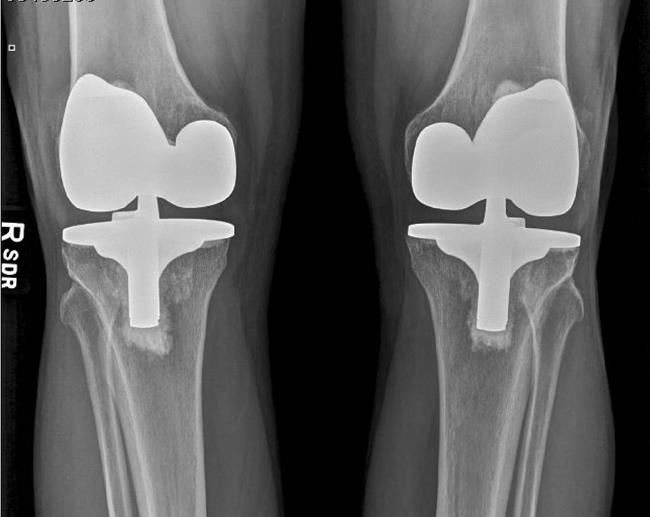Treatment
Patient Story: Osteoarthritis and Total Knee Replacement

Retired IT professional James Alekna first noticed pain in his knees about 14 years ago. When it became difficult for him to work in his garden and play golf, Jim consulted an orthopaedic surgeon. A series of x-rays revealed osteoarthritis, or "wear and tear" arthritis, a degenerative condition in which the smooth cartilage covering the ends of the bones gradually wear away.
"The prognosis was that eventually I would have to undergo total knee replacement," Jim recalls. As he was only 62 at the time, his surgeon wanted to hold off the surgery as long as possible. In the five years that followed, Jim's knee pain became more intense. The pain was unbearable, and restricted him from participating in his favorite outdoor activities.
In 2006, a second set of x-rays were ordered, revealing that Jim's arthritis had progressed to bone-on-bone. Jonathan Schaffer, MD, MBA, an orthopaedic surgeon at the Cleveland Clinic, recommended surgery. In September of that year, Jim underwent bilateral total knee replacement.
"Following surgery, I went through extensive physical therapy at an in-house medical facility for eight days, four weeks in-home therapy, one month physical therapy at an out-patient medical wellness center, and three months physical therapy at a local health/wellness center," he says. Determined to regain his active lifestyle, Jim dedicated himself to his physical therapy program, which he credits as the primary factor for his successful recovery.
Jim has been able to return to all of his pre-surgery activities. He is now better able to enjoy the outdoors, and is no longer restricted by pain. "I am able to meet or exceed anything that I attempt," he says.
Jim has used his experience to help others with the same condition. He has participated in formal panel discussions at the Cleveland Clinic, which addressed all facets of orthopaedic surgery from diagnosis, scheduling, and pre-op visits to the day of surgery experience, post-operative hospital stay, and rehabilitation. Jim found the experience extremely rewarding. "I am proud to say that several recommendations were accepted and implemented at the Cleveland Clinic," he says.
The Cleveland Clinic also has a "buddy program," which pairs a preoperative patient with a former patient to discuss their experience from a patient perspective. "If a patient is feeling reluctant or apprehensive about the surgery, he or she is put in touch with a buddy," Jim explains. Jim has been a buddy to four patients, all who eventually had joint replacement surgery. He still remains in email contact with two of them.
Jim is grateful for his orthopaedic surgery, and understands that research is key to continue to improve the experience for future patients. "The implants that were used in the replacement surgery have a life-span of approximately ten years, based on the lifestyle of the patient," he explains. Jim hopes that because he is extremely active, his implants will have an extended life and that one day researchers will develop new materials so patients will not need additional surgical procedures.
AAOS does not endorse any treatments, procedures, products, or physicians referenced herein. This information is provided as an educational service and is not intended to serve as medical advice. Anyone seeking specific orthopaedic advice or assistance should consult his or her orthopaedic surgeon, or locate one in your area through the AAOS Find an Orthopaedist program on this website.







